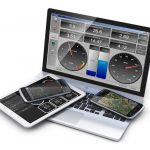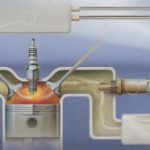Overview of OBD2 Software
On the forefront of modern automotive technology is On-Board Diagnostics II (OBD2) software, a powerful tool designed for vehicle diagnostics and performance monitoring. Every vehicle manufactured since 1996 is equipped with an OBD2 system, which communicates crucial information about the engine and other components. This diagnostic interface not only alerts drivers when something is amiss but also provides a wealth of data that can be accessed through specialized software.
Imagine driving your car while having all its vital signs displayed on your smartphone! This is made possible through OBD2 software, which retrieves real-time data from the vehicle’s engine control unit (ECU). With just a few clicks, drivers can monitor:
- Engine temperature
- Fuel efficiency
- Emissions data
- Vehicle speed
Importance of Real-Time Vehicle Health Monitoring
The days of waiting for warning lights to illuminate are behind us. Real-time vehicle health monitoring is essential for proactive maintenance and problem prevention.
Not only does it enhance safety on the road, but it can also save drivers from hefty repair bills. For example, catching a minor issue like an oxygen sensor failure early on can prevent further damage to the engine. By utilizing OBD2 software, drivers can:
- Identify problems before they escalate
- Optimize vehicle performance
- Extend the lifespan of their cars
In a world where technology and vehicles are increasingly interconnected, OBD2 software represents a step toward smarter driving decisions and enhanced vehicle care.
Understanding OBD2 Software
What is OBD2?
At its core, On-Board Diagnostics II (OBD2) is a standardized system that enables the monitoring and reporting of vehicle performance data. It serves as a vital communication link between the car’s engine, various sensors, and the driver, translating complex information into actionable insights. Think of OBD2 as your car’s doctor, constantly checking its vitals and letting you know when something isn’t quite right.
How OBD2 Works
So, how does this all come together? OBD2 employs a network of sensors and computing systems that continuously gather data from various vehicle components. When a potential issue arises, OBD2 generates Diagnostic Trouble Codes (DTCs), which are specific codes corresponding to various problems.
Connecting an OBD2 scanner to the vehicle allows users to access this data. For instance, if you notice a drop in fuel economy, the scanner can reveal whether it’s due to a malfunctioning sensor or a simple requirement for routine maintenance.
Benefits of OBD2 Systems
The advantages of adopting OBD2 systems extend far beyond mere data access:
- Early Detection: Catching issues before they lead to severe problems.
- Cost Savings: Reducing repair bills by addressing minor issues early.
- Improved Efficiency: Monitoring performance to enhance fuel economy.
Utilizing OBD2 software is like having your own automotive expert by your side, guiding you toward maintaining optimal vehicle health.
Features of OBD2 Software
Real-Time Data Monitoring
One of the standout features of OBD2 software is real-time data monitoring. Imagine cruising down the highway, and with just a glance at your smartphone, you can see critical metrics like engine RPM, coolant temperature, and even fuel trim in real-time. This capability empowers drivers to maintain their vehicles better.
For example, if you notice the engine temperature creeping into the danger zone, you can address it immediately, rather than waiting for a warning light to surface. This feature is essential for proactive maintenance and can prevent minor issues from spiraling into significant repairs.
Diagnostic Trouble Code (DTC) Reading
Another key feature is the ability to read Diagnostic Trouble Codes (DTCs). These codes serve as the vehicle’s way of communicating specific issues to the user.
When a problem arises, OBD2 generates a code that points to the trouble area. For instance, a P0301 code signifies a cylinder misfire in cylinder one. Having such information allows users to diagnose issues quickly. Instead of guessing what’s wrong, you can zero in on the root cause efficiently.
Performance Tracking and Analysis
Lastly, OBD2 software provides robust performance tracking and analysis features. By regularly monitoring performance data, drivers can identify patterns in their vehicle’s efficiency and make necessary adjustments.
- Fuel consumption tracking helps you understand efficiency over time.
- Driving habits analysis can reveal areas for improvement.
Incorporating these insights into your routine can enhance your driving experience and extend your car’s longevity. With OBD2 software, keeping tabs on your vehicle’s health has never been more straightforward.
Top OBD2 Software Tools
In the world of automotive diagnostics, the right tools can make all the difference. Here’s a deeper look at some of the top OBD2 software tools available today, showcasing their features and functionality.
Tool 1: Torque Pro
First on the list is Torque Pro, a popular choice among automotive enthusiasts. This app offers real-time data monitoring and customizable dashboards that you can personalize to display the metrics most important to you.
Key Features:
- Extensive DTC reading capabilities
- Graphical representation of data for easy understanding
- User-friendly interface
For someone who loves diving into the technical side of their vehicle, Torque Pro is a must-have tool.
Tool 2: Carista OBD2
Next up is Carista OBD2, which stands out for its user-friendly approach. While it also provides diagnostic trouble codes and monitoring, its standout feature is the ability to customize vehicle settings.
Key Features:
- Integration with a wide range of vehicles
- Customization options for lighting and features
- Comprehensive diagnostic functions
Carista makes it easy for users looking to tweak their cars without needing complex knowledge.
Tool 3: BlueDriver OBD2 Scanner
Lastly, the BlueDriver OBD2 Scanner is revered for its all-in-one functionality. Unlike many software tools, it pairs with a physical scanner for a complete diagnostic solution.
Key Features:
- Extensive database of DTCs with detailed repair reports
- Live data streaming for real-time analysis
- Vehicle-specific features based on make and model
With BlueDriver, you can dive deeper into vehicle diagnostics with valuable insights, making it a favorite among DIY mechanics.
By exploring these tools, drivers can find the ideal match for their specific needs, simplifying vehicle maintenance and diagnostics significantly.
Choosing the Right OBD2 Software
With a plethora of OBD2 software tools available, selecting the right one for your needs can seem daunting. However, understanding a few critical factors can simplify your decision-making process significantly.
Compatibility with Vehicle Models
First and foremost, check the compatibility of the OBD2 software with your vehicle model. Not all tools support every make and model, and using incompatible software can lead to missing crucial data.
- Research the Tool: Always read the specifications to confirm if it works with your vehicle.
- Check for Updates: Ensure that the software regularly updates its compatibility list, particularly if you have a newer vehicle.
User-Friendly Interface
Next, consider the user interface of the software. A graphic-heavy and intuitive design can make a world of difference, especially if you’re not particularly tech-savvy.
- Trial Versions: Use trial versions of the software to get a feel for the interface before committing.
- Online Reviews: Look up user feedback and reviews regarding ease of use; this often gives a clear picture of what to expect.
Cost and Subscription Options
Finally, evaluate the cost and subscription options. While some software tools offer a one-time purchase, others may involve ongoing costs that can add up over time.
- Subscription Benefits: Look for those that offer trial periods, ensuring you can test before you spend.
- Long-Term Costs: Assess whether the benefits justify the recurring fees, as some tools provide robust ongoing support and updates.
By considering compatibility, usability, and costs, you can confidently choose the OBD2 software that best suits your automotive needs.
Installation and Setup
Once you’ve chosen the right OBD2 software, the next step is installing it and getting everything set up to start monitoring your vehicle. This process may seem intimidating, but it’s generally quick and straightforward!
Installing OBD2 Software
First things first, installing OBD2 software usually involves downloading it from an app store or the developer’s website. Most software tools are compatible with both Android and iOS devices.
- Step-by-Step Instructions: Follow on-screen prompts during installation.
- Check for Updates: Before diving in, ensure the software is updated to the latest version for optimal performance.
Connecting OBD2 Adapter
Next, you’ll need to connect your OBD2 adapter. This small device plugs into your car’s OBD2 port, typically located under the dashboard near the driver’s seat.
- Sure Connection: Make sure your vehicle is turned off before plugging in the adapter.
- Bluetooth or Wired: Depending on your adapter type, pair it with your device via Bluetooth or use a USB connection.
Configuring Software Settings
Finally, it’s time to configure the software settings. Open the application and follow instructions to set it up according to your preferences.
- Select Vehicle Model: Input your vehicle’s make and model for more accurate diagnostics.
- Customize Dashboard: Arrange the dashboard to highlight key metrics you want to monitor.
With everything configured and connected, you’re now ready to benefit from real-time data and diagnostics on your vehicle! This simple setup opens the door to smarter, prompt vehicle maintenance.
Interpreting Data and Alerts
With your OBD2 software set up and monitoring your vehicle, the next step involves interpreting the data and alerts it generates. This understanding can be pivotal in maintaining your vehicle’s health.
Understanding Diagnostic Codes
When issues arise, your OBD2 system generates Diagnostic Trouble Codes (DTCs) that essentially act as a language between your car and you. Each code consists of a letter followed by four digits, making it fairly straightforward to identify problems.
- Example: A P0420 code typically indicates a problem with your catalytic converter.
- Resources: Use your OBD2 software’s built-in database or online resources to decode these messages and determine their implications.
Common Vehicle Health Issues
Understanding these codes allows you to pinpoint common vehicle health issues. Some typical issues include:
- Oxygen Sensor Failure: Poor fuel efficiency and increased emissions.
- Engine Misfire: Can harm the engine long-term if untreated.
Monitoring these alerts can guide you in taking timely actions to avert costly repairs.
Taking Action Based on Data
Once you comprehend the data and codes, your next step is to take appropriate action. This may involve:
- DIY Repairs: Simple fixes like replacing a sensor can save money.
- Consulting Professionals: For complex issues, it’s often best to seek professional help.
By actively interpreting and acting on your vehicle’s data, you gain greater control over its maintenance, ultimately leading to safer and more reliable driving experiences.
Data Logging and Reporting
Once you’re actively monitoring your vehicle’s performance through OBD2 software, the next robust feature is data logging and reporting. This functionality offers a deeper understanding of how your car performs over time.
Logging Performance Data
Logging performance data means recording essential metrics, such as engine temperature, speed, and fuel efficiency, during your drives. Most OBD2 software automates this logging process, making it effortless for the driver.
- Real-Time Tracking: As you drive, the software records fluctuations in performance, providing a comprehensive overview of your vehicle’s health.
- Storage Options: Many applications allow for either cloud-based or local storage for easy access and retrieval.
Generating Reports
The next step is generating reports based on the logged data. Many OBD2 software tools enable users to create detailed reports that summarize the performance over specific time frames.
- Customization: Tailor reports to highlight metrics most relevant to you, making it easier to see areas needing attention.
- Export Options: Save your reports in various formats (PDF, Excel) to share with mechanics or keep for future reference.
Analyzing Trends Over Time
Finally, analyzing trends in your data can be a game-changer for vehicle maintenance. By reviewing reports over weeks or months, you can uncover:
- Performance Patterns: Identifying when performance dips or spikes can reveal underlying issues.
- Cost Predictions: Spotting trends can help forecast future repairs and maintenance costs.
This proactive approach to data logging and reporting transforms how you manage car maintenance, allowing for informed decision-making and ultimately leading to better vehicle longevity.
Maintenance and Optimization
To ensure your vehicle continues to run smoothly, regular maintenance and optimization of your OBD2 software are essential. This ongoing commitment enhances your vehicle’s performance and longevity.
Regular Health Checks
Conducting regular health checks is vital to catch potential issues before they develop into costly repairs. By routinely monitoring your vehicle’s data through the OBD2 software, you can keep an eye on critical metrics.
- Set Reminders: Schedule periodic health checks or set reminders within the software to prompt you at regular intervals.
- Inspect Key Metrics: Pay attention to areas like engine performance and fuel efficiency to catch any sudden fluctuations.
Software Updates
Keeping software up to date is equally important. OBD2 software developers frequently release updates to improve functionality and compatibility.
- Automatic Updates: Enable automatic updates if available; this ensures you always have the latest features.
- Changelog Review: Occasionally check the changelog to understand what new features or fixes have been implemented.
Tips for Maximized Efficiency
Lastly, here are a few tips to maximize your vehicle’s efficiency:
- Optimal Driving Habits: Adopt smooth acceleration and braking to improve fuel efficiency.
- Regular Maintenance: Routine oil changes and filter replacements contribute to better overall performance.
By integrating these maintenance practices, software updates, and efficiency tips into your routine, you can ensure that both your OBD2 software and vehicle remain in top-notch condition, leading to a more reliable and enjoyable driving experience.
Future Trends in OBD2 Software
As automotive technology evolves, so does the potential for OBD2 software to transform our driving experiences further. Let’s explore some exciting future trends that aim to enhance vehicle diagnostics and maintenance.
Integration with Smart Devices
One major trend is the increasing integration of OBD2 software with smart devices. Imagine receiving alerts not just on your car’s screen but also on your smartwatch or smartphone.
- Connected Ecosystem: This integration will allow continuous monitoring, sending alerts directly to your devices.
- Convenient Access: Imagine getting a notification on your smartwatch that your engine is overheating while you’re miles away from home!
AI and Machine Learning Applications
Another thrilling trend is the incorporation of AI and machine learning technologies into OBD2 software. These advances could lead to more automated diagnostics and predictive maintenance.
- Predictive Analytics: By analyzing historical data, AI can predict potential future failures and recommend preventive measures.
- Smart Recommendations: Based on driving style and vehicle usage, the software could suggest personalized maintenance schedules.
Potential Development in the Field
Looking forward, we can expect OBD2 software to offer even more capabilities, like advanced vehicle-to-everything (V2X) communication. This could enable cars to share data with traffic infrastructure.
- Enhanced Safety Features: This connection might improve safety through real-time traffic updates and alerts about road conditions.
- Eco-Friendly Solutions: Developers may focus on optimizing fuel efficiency to align with environmental goals.
Embracing these future trends will not only make vehicles smarter but also enhance drivers’ ability to maintain their vehicles proactively, ushering in a new era of automotive intelligence.
Conclusion
As we wrap up our exploration of OBD2 software, it’s clear that these systems offer a remarkable suite of benefits for drivers and vehicle owners alike.
Recap of Benefits
From real-time data monitoring to comprehensive diagnostic capabilities, OBD2 software empowers users to take control of their vehicle’s health. Some key benefits include:
- Early Problem Detection: Catching issues before they escalate saves both time and money.
- Improved Performance: Regular monitoring helps maintain optimal fuel efficiency and engine function.
Importance of Real-Time Monitoring
Real-time monitoring stands out as one of the most significant advantages of OBD2 software. The ability to receive instant feedback about your vehicle’s performance ensures you’re always informed about its health. Imagine cruising down a highway, confident that you’re aware of any under-the-hood issues before they become critical!
Encouragement for Utilizing OBD2 Software
With the automotive landscape continuously changing, utilizing OBD2 software has never been more vital. Whether you’re a seasoned mechanic or simply a car enthusiast, embracing this technology brings you closer to understanding and optimizing your vehicle’s performance.
So, go ahead—make the leap into OBD2 software today! You’ll not only enhance your driving experience but also foster a proactive approach to vehicle maintenance, ultimately leading to a safer and more enjoyable ride.






